Ronnie Montrose’s ‘Rock Candy’ Tone…
…and Three Van Halen Connections
Montrose, the 1973 self-titled debut album by the band of the same name, is one of those tone-pillar albums – “a pillar of tone that holds up the house of rock” (or pick a different metaphor). It likewise stands on its own as a monument of great tunes and great tone.
I heard “Rock Candy” on satellite radio the other day in the car, and just couldn’t get over how great it sounded. BIG drums, BIG guitar, simple riff, rip your head off vocals by Sammy Hagar who at that time was pretty much unknown.
So I had to find out: What was Ronnie Montrose using on that album – the default thinking is that it was a Les Paul through a Marshall, but was it? And that overall sound, that “hugeness” across the full audio spectrum, something that’s largely missing in this digital recording/playing age. How?
Nose to the ground, and here’s what I found out.
Ronnie’s Gear
It was NOT a Marshall: It was a tweed Fender Bandmaster, a 3×10, apparently a combo.
> Amp builder and tech Mark Cameron from the metroamp.com forum: “I asked [Ronnie] what he used on this and it’s a 3×10 Bandmaster. He found it at a garage sale the day before he went in to record, bought it for almost nothing and used it as is, he said. Also I think a regular [Fender] Champ on 10 for some stuff – Ted Nugent did this too.”
> Ronnie confirms use of the Bandmaster when talking to vintageguitar.com about his tone on “Bad Motor Scooter” off the same album: “…the one amp I wish I’d never got rid of, a three-ten tweed Fender Bandmaster. I’d gotten it for $90, and when I bought it, it was covered with woodtone contact adhesive paper! The contact paper peeled right off – it didn’t leave any residue and the tweed looked brand new. I used that amp so much I blew it up several times before I finally got rid of it.”
In the ’74 video below, you can plainly see tweed Fenders behind Ronnie. Also, in the video below that – an in-studio track to promo the ’74 release of the Paper Money album – it looks like Ronnie is playing through a small mic’d Fender combo (anyone know what amp that is?).
In case you’re curious, Fender Bandmasters have 6L6 power tubes. To my ears, 6L6s sound less wide and warm than the EL34 tubes used in Marshalls. Small Fender combos I believe usually use lower-power 6V6 power tubes, which sound similarly less-warm (but still good!) than EL84s to my ears.
Guitar-wise, Ronnie favored Gibsons at that time, notably Les Pauls. I couldn’t find any info on exactly which Les Paul(s) may have been used for that recording, but it appears that the ’59 ‘burst that was allegedly stolen and which he wants “back” from Gary Moore wasn’t one of them: In the lawsuit, it states that that guitar was stolen in 1972 at an Edgar Winter Group concert, which I believe would’ve put it before the Montrose recording sessions.
The Sound and the VH Connections
A big part of the Montrose album sound was Ted Templeman (producer) and Don Landee (engineer). If those names sound familiar, that’s because that’s the same pair of guys who produced and engineered the first six Van Halen albums (through 1984). After that, Donn helped through some of the Sammy-era VH albums (while Ted produced David Lee Roth’s band) and Ted came back to co-produce For Unlawful Carnal Knowledge with Andy Johns.
So Ted, and notably Don, helped Van Halen – and particularly Ed – sound huge on those albums:
> User Ross Hogarth on the prosoundweb.com forum: “I just worked with Ted and talked to him about that record [Montrose]. I asked him if the guitar sound was his template for Van Halen [and] he agreed. He also gives big props to Don Landee.”
> From a 1991 Guitar World interview with Ted: “Donn Landee is such a great engineer, he really took a major part in capturing that raw guitar sound [on the Van Halen albums].”
Ed has also been quoted as saying that Don and Ted made his guitar sound much bigger on VH1, and that he liked the hugeness of the Montrose record.
However, Ted says in the same GW interview: “Edward pretty much had that sound of his at the Starwood. As far as I was concerned – and Donn would probably tell you the same thing – recording him was pretty much a question of sticking a mic in front of his amp.”
So here are the Montrose-VH connections:
> Sammy was in both bands;
> Ted and Donn produced and engineered both bands;
> One of Ed’s favorite cranked-amp sounds was a Fender Bandmaster. That allegedly was his home practice amp.
_____
Here’s “Rock Candy,” from the original album:
Category: Bandmaster, Edward Van Halen, Fender, Les Paul, Ronnie Montrose, Sammy Hagar, Van Halen

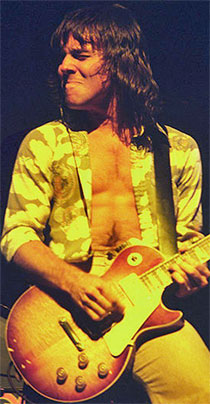




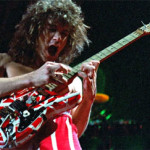
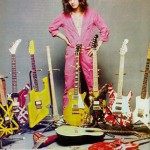
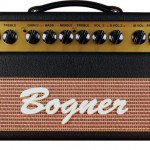
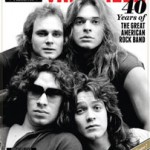
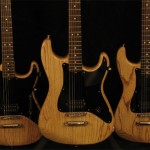
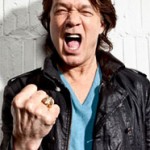
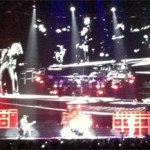
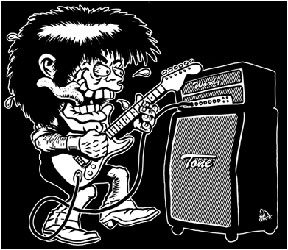

One thing not mentioned is that Ronnie Montrose was using a Ram's Head Big Muff for a lot of the fuzz/distortion on the first Montrose album.
I love that album. The production is fantastic, sonically it really stands out amongst other albums recorded at the time. I think Sammy’s voice is great on the record, much smoother and not as high as it would become later on.
RIP ronnie! Man this guy had feel when he played no wonder eddie liked him! great tone and vibrato too
he was using duncan 59’s on the last baker axe.
“So what is it about the B3 that makes it the right tool for you?
It has a mahogany body, and a mahogany neck that’s 1u” at the nut. I got spoiled years ago when Grover Jackson sent me a neck he had made for Warren DeMartini that was too big for Warren at the time. Well, now I can’t play anything smaller than a neck with a 1u” nut. Anything else feels like a mandolin neck to me! There’s also something about the resonance of the B3’s mahogany neck and mahogany body that just works for me. I had Gene installSeymour Duncan ’59 humbuckers in both positions with a pickup selector switch and one Volume knob. No tone control. It’s totally straight ahead.”
R.I.P. Ronnie
The Fender combo amp, in the video recorded at the record plant for the paper money session in Sausalito; was a Fender Princeton, which I traded Ronnie some Marshall equipment for, right after those sessions. It was modified by Ronnie himself, and had a 12″ JBL D120 and a Bassman transformer, so it was pretty loud. It sounded great! this amplifier was stolen from me in 1980 and yes, I still want it back after all these years. It is stenciled #2 Montose on the back of the amplifier. I continue to offer a $500 dollar reward for information that leads to its return.
Gary “Mick” Lazer
Ron used the small tweed Fender amp with a Electro-Harmonix Big Muff. The stories about the 3X10 Bandmaster are not correct. Also, Eddie used a different, later Bandmaster, and plugged the speaker into the “extension” jack. Those amps distort very easily that way, but also blow-up very easily. 50’s and 60’s Gibsons were everywhere back then, and I remember buying Juniors for $50.00. Les Paul sunbursts were $75.00 in the pawn shops until Bloomfield used one. After that they went up, but you could easily buy one for less than $1000.00 up into the 80’s, when they went through the roof.
Can you give us a reference for your info because Ronnie himself said the Bandmaster was correct.
Ronnie owned 2 small amps at the time that he recorded the first album. He owned the modified blackface Princeton that I mentioned on the earlier post, and also a mint 1958 tweed Champ with an 8″ JBL speaker. The tweed Champ was part of the trade for the Marshall equipment. I still own the 8″ JBL, but stupidly traded off the Champ for some recording equipment and a new Rockman amplifier. If he found the bandmaster, it was after our trade. He may have used either small amp or both for recording. The Champ was the small amplifier that Sammy Hagar mentioned plugging into in his book while auditioning in Ronnie’s small Sausalito living room. The Princeton would have been way too loud to sing over. Ronnie claimed that the Champ was now putting out 15 watts, so he may have modified it in some way. We didn’t get into that, at the time of the trade. I had no reason to doubt that. It was plenty loud.